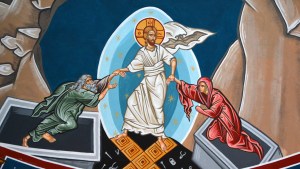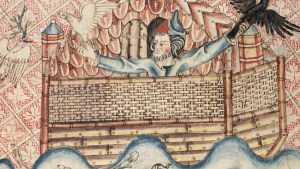Lenten Campaign 2025
This content is free of charge, as are all our articles.
Support us with a donation that is tax-deductible and enable us to continue to reach millions of readers.
In his message for Lent 2019, Pope Francis connects the Lenten campaign for spiritual renewal to the teaching of St. Paul: “the whole of creation waits with eager longing for the revealing of the children of God” (Rom 8:19). The Holy Father explains that just as sin has a corruptive power, which even blemishes creation, the grace of Jesus’ death and resurrection is restorative. Pope Francis says, “This mystery of salvation, already at work in us during our earthly lives, is a dynamic process that also embraces history and all of creation.”
So what is this redemption of creation?
The fall and creation
Why does creation need to be redeemed? Doesn’t the Bible say that creation was “good” when God made the earth? While God made the world good, as the book of Genesis attests, the original harmony of creation was thrown into chaos with Adam and Eve’s sin. The original goodness of creation is deeply harmed by sin and becomes subject to decay and disorder. Therefore, creation needs a redemption. The whole world needs to be transformed by the saving work of Jesus’ dying and rising.
The last day
But I thought the world was going to end. Doesn’t the Bible teach that this world will pass away?
We believe that Christ, who is now seated at the right hand of the Father, will come on the last day to judge the living and the dead (Nicene Creed). St. Paul tells us that on that day, “the trumpet will sound, and the dead will be raised imperishable, and we shall be changed” (1 Cor. 15:52). The dead shall rise from their graves. It will happen, St. Paul continues, “in an instant, in the twinkling of an eye” on a day, the Holy Gospels assure us, that is yet unknown (Matt 24:36).

Read more:
Do I believe in the resurrection of the dead?
On the Last Day, our bodies will be changed. Any illness or imperfection will be wiped away. St. Paul tells us we shall be raised “incorruptible,” no longer subject to infirmity or decay. The evidence of Scripture describing Jesus’ own resurrected body gives us some idea of what the qualities of this body might be like. Medieval theologians even went so far as to speculate that these resurrected bodies may well be 33 years old, the age of the Risen Lord! But these bodies, theologians tell us, will still be made of the elements, that is, matter.
Conflagration – cleansing by fire
I imagine that the resurrection of the body will be something like the transformation of the beast into the prince in Walt Disney’s cartoon version of Beauty and the Beast. We don’t know exactly how it will happen, but it seems light and whirling energy will rearrange and purify the things that are and have been. And our bodies—the dust of our bones perhaps long-since reduced to the clay of the earth—will be refashioned in a flurry of atomic glory.
Something similar will happen to the world. Medieval theologians, based on evidence found in Scripture, thought that this process would take place by a cleansing fire. Their word for it is “conflagration.” This teaching is developed from Church Fathers, like St. Augustine, who says, “just as the flood resulted from an outpouring of the waters of the world, so the fashion of this world will perish by a burning of worldly flames” (City of God, XX, 16).
This cleansing will remove the stain of sin, e.g., purify the vapors of air tainted by the smoke of idolatry, so that the resurrected saints will have a fitting dwelling place.
Another result of this end-of-time house cleaning is, Thomas Aquinas notes, “all that is foul will be brought together to the place of the damned” (Summa Theologiae q. 74, a. 6). Not only will the purified elements, redeemed creation, be used to prepare a dwelling place for the saints, but the filth will be sent to hell!
New heavens and a new earth
The created elements of the world, the stuff of the planet, will be made into a new creation. This is the definitive moment, wherein God intends “to unite all things in [Christ], things in heaven and things on earth” (Eph. 1:10). The hope of Christ is at work already in this life but will be made complete when the goal of recreation is accomplished. Revelation says:
Then I saw a new heaven and a new earth; for the first heaven and the first earth had passed away, and the sea was no more. And I saw the holy city, new Jerusalem, coming down out of heaven from God, prepared as a bride adorned for her husband; and I heard a great voice from the throne saying, “Behold, the dwelling of God is with men. He will dwell with them, and they shall be his people, and God himself will be with them; he will wipe away every tear from their eyes, and death shall be no more, neither shall there be mourning nor crying nor pain any more, for the former things have passed away” (Rev. 21:1-4).
Until this definitive cleansing at the end of time, creation is subject to a working out of salvation. The power to cleanse and refashion ultimately comes from the cross, the Paschal mystery, wherein Christ undoes Adam’s sin. Adam’s sin may have marred all of God’s good and holy creation, but the cross of Christ makes all things new.

Read more:
Why Jesus is the true Noah and how his cross is the new “ark”

